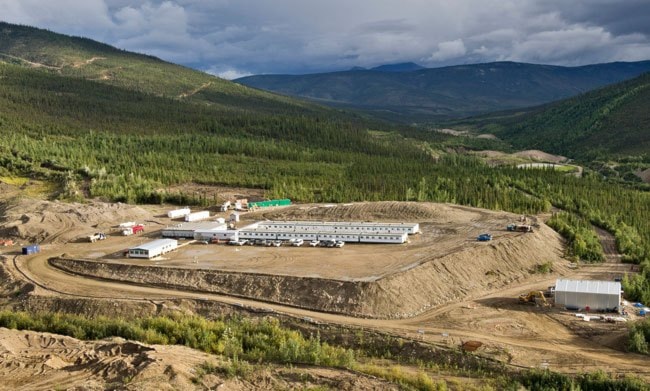With a feasibility study now complete, Victoria Gold Corp. is looking for partners to help launch its proposed Eagle mine near Mayo.
If the company’s plans come to fruition, construction will start later this year and by late 2014, the open-pit operation will be churning out 200,000 ounces of gold annually and employing up to 400 workers.
However, it’s not a done deal yet. Victoria Gold must still clear the Yukon’s permitting regime and secure nearly $400 million to build the mine.
Yet the project is further along than any other potential mine in the territory, said president John McConnell.
The feasibility study is a big deal, he said, because it contains enough finicky details to assure potential backers that the project is solid.
“We’re preparing to go out and talk to banks directly,” said McConnell. The company’s also secured the Rothschild Group as its financial advisor to help stickhandle these financial deals.
McConnell aims to borrow half of the money needed to build the mine. The rest would be raised by finding a partner, or selling the rights to future gold sales.
Victoria Gold has managed to avoid any big controversies so far. And it’s managed to win the support of the local First Nation.
In October, the company signed a benefits agreement with the First Nation of Na-Cho Nyak Dun, which guarantees the First Nation members a share of the mine’s jobs and contracts.
And Yukon Energy has promised to connect the mine to the territory’s power grid. That now presents a big challenge to the utility, because Eagle is expected to gobble up the territory’s electrical surplus.
[image2]
It will consume an estimated 100 gigawatt hours - more than a quarter of what the territory generates today.
That’s why Yukon Energy is now in a hurry to assess ways to boost its energy supply, with schemes to build windmills on Ferry Hill or hold back more water in Marsh Lake.
The Eagle project, located 85 kilometres northeast of Mayo, is expected to operate for nine years. But Victoria Gold continues to expand its resources at its Dublin Gulch property, buoying hopes that mining could continue for much longer.
“It’s early days, there could potentially be two or three more Eagles along that trend,” said McConnell.
The company already has an all-season camp at the site. This allowed drilling work to continue through the winter - something no other Yukon exploration outfit has done, he said.
“We had 35 hearty souls up there through the minus 40,” he added.
Eagle has probable reserves of 2.3 million ounces of gold. Total resources at the site have grown to 6.3 million ounces, up from an initial 2.6 million ounces in 2009.
Estimates put the cost of producing an ounce of gold at Eagle at $600. That leaves a handsome profit margin if gold remains anywhere near today’s lofty prices.
Eagle’s design is based on Alaska’s Fort Knox gold mine. That’s operated by gold giant Kinross, which owns a 16 per cent stake in Victoria Gold, and has helped nudge the project along with advice and financial support.
Ore would be mined from an open pit, crushed along a three-stage circuit, and then doused with cyanide to separate the gold from the ore, using a process known as heap leaching.
Western Copper Corporation’s plans to heap leach its copper deposit, near Carmacks, faced heavy public opposition for fear a spill would pollute the nearby Yukon River.
But there are big differences between heap leaching for copper and gold, said McConnell. Copper heap leaches uses sulphuric acid. There are few examples of such mines operating in northern climates.
Not so with gold heap leaches. One was once active at the Brewery Creek mine in the Yukon. And the Fort Knox mine has a similar climate and geology to the Eagle mine, said McConnell.
“When people see an actual heap leach, it takes away all the anxiety,” he said.
Like Fort Knox, Eagle’s heap leach will be located in a valley, to prevent runoffs and help retain heat, said McConnell.
And Victoria Gold has put an experienced hand in charge of its operation. In February, the company appointed as its chief operating officer Andrew Kaczmarek. He has helped design operating heap leaches in Turkey and Chile.
McConnell himself has more than 30 years of experience mining in the North. He managed the Nanasivik lead-zinc mine on the northern tip of Baffin Island in Nunavut, and he helped launch De Beers’ Snap Lake diamond mine in the Northwest Territories.
McConnell also grew up on a mine in the west Kootenays of British Columbia - the Emerald, a lead, zinc and tungsten operation. He counts as his first job shovelling snow off the buildings there at age 14.
“I think it’s the best industry in the world,” he said.
Contact John Thompson at
johnt@yukon-news.com
